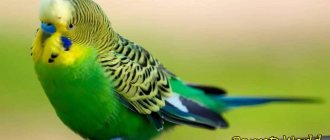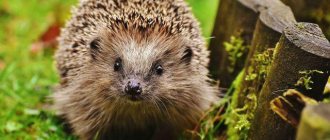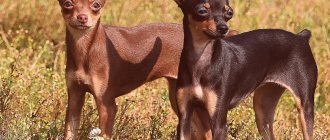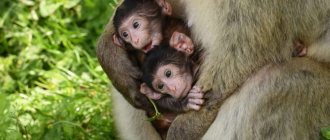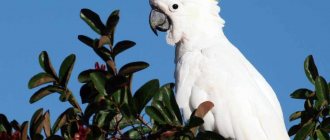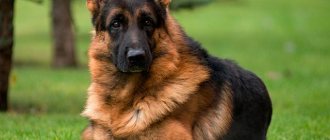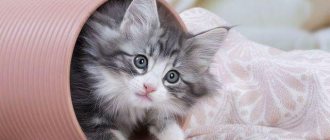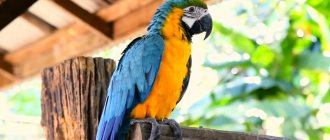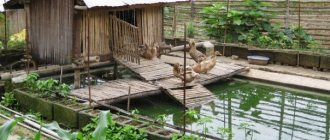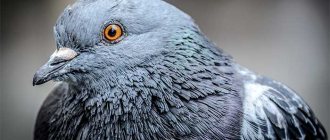The most common waterfowl in Moscow's water bodies are ducks. They significantly outnumber others - great grebes, moorhens, coots and gulls. Large populations of ducks appeared in the capital only in the middle of the 20th century. At this time, the nutrition of the townspeople improved and they stopped perceiving birds as hunting prey and began to feed them. In addition, large natural areas with reservoirs were annexed to the city. Some ponds and rivers no longer freeze completely in winter due to human activity. Some ducks stopped flying south in the fall, forming a sedentary population, which, according to the latest data, amounts to 29 thousand individuals. However, not all birds build nests in the metropolis. In the spring, some of them fly to the Moscow region.
As part of the all-Russian campaign “Grey Neck - 2020”, Mospriroda specialists annually conduct a winter census of waterfowl. According to their information, about 9,700 waterfowl remained to winter in the natural areas of Moscow. Most of them are mallards (9369 individuals). In second and third place in numbers are herring gulls (194 individuals) and burnt gulls (71 individuals). Also, Mospriroda specialists together with volunteers counted 49 common gulls, 25 goldeneyes, 17 black-headed gulls, 12 tufted ducks, and one white-fronted goose.
Of those rarely wintering in urban natural areas, the following were seen: great grebe (one individual), sea duck (four individuals), wigeon (two individuals), and teal (five individuals). Thus, on the Yauza River, Mospriroda specialists saw two wigeons and one male teal. A teal (one male and three females) was also seen on the Rudnevka River in the Kosinsky natural-historical park.
Duck lifespan
It is difficult to say exactly how long a duck lives, because this is influenced by a number of factors. On average, the mallard, the ancestor of the domestic duck, lives in nature for 5–10 years. At home, these figures can be significantly lower. It all depends on the purpose of the bird.
Egg-laying
Perhaps this group of breeds can be classified as long-livers. The productivity of a domestic duck lasts for 6–7 years, so this is the maximum lifespan of a bird in this group, unless it is left to feather.
But such a long life is possible only under ideal conditions and proper care. Illnesses and injuries can also affect the duration to a lesser extent.
The peak egg production of a bird occurs in the second year of its existence and then gradually declines, so if the main task of the farm is to make a profit from eggs, then keeping a duck of the egg breed is profitable only for up to three years.
Representatives of this group live the shortest. Meat breeds reach slaughter weight by 2–2.5 months. life, and some even earlier (at 1.5–2 months). It is not profitable to keep them longer, since the weight gain will be insignificant, and feed consumption will remain at a high level. In addition, the younger the bird, the better the quality of its meat.
Meat-egg
This group has a life expectancy in between the meat and egg breeds. If a bird has lower egg production than meat quality, then it is advisable to keep it not much longer than a meat breed. If egg production comes first, then the optimal period is two to three years. On average, the lifespan of a universal group of breeds is one or two years.
Factors influencing migration
The multiplicity of migration routes has already been discussed above. However, it is worth noting that the same flock from the same field, lake or city can sometimes change its routes throughout its life. This at one time somewhat confused ornithologists.
But what influences the maintenance of duck migration routes? Among the main factors, the following should be noted:
- hunting;
- climate change;
- changes in environmental conditions (especially due to human activity);
- deterioration of the food supply.
Each of the points should be considered in a little more detail. First about hunting. When ducks are regularly shot at by hunters at any point, they quickly begin to avoid dangerous places, changing their route and even the wintering place itself. The starting points can also change, although, as a rule, the bird simply stops returning to its “native land”, settling several kilometers (or tens of kilometers) from them.
The next three points regarding changes in migration routes are largely interconnected. When a person actively clears forests where he later plants fields, this, of course, greatly affects the climate. Land reclamation, factories, exhaust from cars in cities - all this also has a gradual impact. Of course, there are also natural processes of change that should also be taken into account (albeit to a lesser extent due to their slowness).
https://youtube.com/watch?v=VIDEO_ID
Ducks also have serious problems with food, and this is again largely due to humans. When the environment in which all the components of a bird's diet were present is destroyed or radically changed, they, of course, have to change their routes.
How many years do different types of ducks live?
The special properties and characteristics of the breed are one of the factors that most influence the longevity of ducks. The highest viability of wild breeds used for domestic breeding. These include:
- Mulard is a large breed that lives up to 15 years if not slaughtered;
- Mute - a breed weighing up to 8 kg, living up to 15 years;
- The Mandarin duck is a record holder among all breeds, having a lifespan of up to 20 years.
How many years a duck lives in comfortable home conditions and with normal feeding depends on the type of its productivity. Typically, due to slaughter for meat, adult meat breeds do not live longer than 7-8 years. Those birds that are raised for feathers can live up to 12-15 years.
The lifespan and vitality of wild ducks are influenced by various factors:
- how long a duck lives in natural conditions depends on the climate - in warm regions with average humidity and high temperatures they live 6-8 years longer than in cold conditions;
- activity of predators - the abundance of foxes, ferrets, martens, wild dogs and other types of predatory animals reduces the lifespan of ducks to 3-10 years;
- shooting - during the hunting season, an innumerable number of birds die. This factor does not allow ducks to live longer than 5-7 years;
- diseases exterminate a large number of young animals under the age of 1 year. Later, the bird gets sick less often and can live up to 15-20 years in the absence of other unfavorable circumstances.
The lifespan of domestic breeds depends on the feeding and conditions under which they are kept. A dry microclimate in the room, a sufficiently high temperature in the presence of heating, prolong the life of domestic animals up to 18-20 years. The opinion about the positive effects of abundant feeding is considered erroneous - obese ducks usually live no longer than 7-8 years.
An interesting fact about the longevity of various breeds is that down-feathered bird species live a longer life in comparison with other breeds. Second place is reserved for egg-laying breeds - they can reach an age of 12-15 years. Meat species live the shortest - they rarely cross the line of 7-8 years.
The conclusion may be that only a balanced diet without a shortage or excess of feed, dry conditions, the absence of predators and the properties of the breed have a positive effect on the longevity of ducks of domestic and wild species.
Choice of warm countries
The choice of your future home depends on many factors. What guides birds looking for new nesting sites? Not all species of wild birds migrate, but only wild flocks that are unable to remain in the winter:
- European duck;
- crane;
- wild geese;
- birds flocking.
Geese are gregarious birds; they can move short distances and migrate within the territory of one country. The main condition for their movement is considered to be temperature with a “+” sign. Ducks can settle on the shores of the Caspian Sea, not far from Kuban. A flock can even end up in Italy, having covered a considerable distance. The flock always flies along a clearly defined route. The bird's paths are located along ponds, fields, and in places with food for each duck.
Why shouldn't you give bread?
Paradoxically, it is strictly forbidden to feed birds with white bread. It does not contain any ingredients valuable to poultry. This product fills the bird's stomach, creating a false feeling of fullness and causing the duck to give up searching for healthier food. If, despite the prohibitions, you still want to treat the ducks with bread, leave it on the shore.
For those who don't know how much ducks eat, it will be interesting that birds should not be given too much food. This is explained by the fact that the feathered inhabitants of reservoirs, accustomed to regular feeding, begin to partially lose their instinct to search for food. In addition, such birds refuse to fly to warmer climes in a timely manner and often die in the winter cold.
In addition to the above reasons, there are several other factors that explain this ban:
- Under natural conditions, wild ducks do not consume any product that is similar to bread. Their domestic species are not adapted to such nutrition either. Their body simply cannot cope with the digestion of products made from cereal flour.
- Black and white bread contains a large amount of carbohydrates. Accordingly, ducks quickly gain weight from it. This is even good for poultry, but for wild birds it can lead to its imminent death.
If a duck eats not just bread, but a product on the surface of which mold is noticed, this will lead to aspergillosis. The chances of contracting this disease are low, but if this happens, it is almost always fatal. Aspergillosis is also a contagious disease that can lead to the death of the entire livestock.
Ducks should not be fed bread. Moreover, in any quantity and in large quantities, especially baked goods and black bread are prohibited. Do not feed ducks at any age fatty foods. Fried seeds, peanuts, and fatty dairy products are prohibited. Cottage cheese is given only to small downy ducklings.
And definitely don’t throw everything you eat into the water.
. Ducks may pick up a product that is obviously harmful to them. Moreover, food in water quickly deteriorates, as a result, birds eat food contaminated with fungus or putrefactive bacteria.
What do ducks living in the wild eat? This is a very important question that does not occur to everyone who has ever fed birds on city ponds.
And not many people pay attention to posters calling not to feed waterfowl.
Reasons for the decline in swallow populations
When considering the question of where swallows spend the winter, it should also be said about the size of their population. Research in recent decades has shown that populations of these migratory birds in Europe and Russia declined by 35% between 1990 and 2011.
The main reasons for the decline in the number of swallows are the following:
- Reducing the area of rural settlements in favor of urban ones. It is difficult for swallows in big cities to find material to build their nests.
- A significant increase in the volume of insecticides used on crop areas, which reduces the nutritional base for birds.
- Destruction of swallow nests by humans.
- Climatic changes in recent years. Global warming throughout the world means that the weather is still warm in October, and as a result, swallows are delaying their migration. Starting to migrate closer to winter, the birds risk dying from the cold during the migration.
"Professions" of geese
Herbivory and some gluttony have made the goose an excellent weeder. Thus, in the USA, geese often work on cotton plantations. They pluck out with their beaks all the weeds between the plants that the equipment cannot remove. Because they don’t like the taste of cotton, they leave it. It was estimated that only 25 individuals are capable of weeding a field of about 10 hectares in a short time.
Some natural hostility towards outsiders made it possible for Scottish farmers to make them “guards” of a small alcohol distillery. After all, when they noticed strangers, they hissed and nipped strongly with their beaks, making screams, thereby scaring away uninvited guests.
Indian runners
This is an ancient egg-laying breed, which is about two thousand years old. Their peculiarity of behavior is that when running, the birds fancifully spread their wings and stretch their necks.
The bird lives “on the run”, is active and mobile. At the same time, representatives of this species are calm and do not worry without reason. The plumage color of ducks is white or black.
The runner breed has an important advantage: egg productivity. A laying hen produces about 270-300 eggs per year. Their meat is reminiscent of chicken meat in many ways and has a delicate taste and aroma.
Runners are easy to care for; representatives of this breed are not picky about food, have a friendly character and get along with other relatives without any difficulties. However, an adult duck weighs only 2 kg, which is its main disadvantage.
If you decide to get this breed of duck, we recommend that you read the article “Indian Runner Ducks: Description of the Breed.”
How to determine the sex of a chick in the first week
Already in the first days of life of hatched ducklings, their gender can be determined. Despite the fact that at first glance they are absolutely the same, there is still a difference between small drakes and ducks. Chicks of one day, one week and one month of age can be distinguished in different ways: by appearance, anatomical structure, character and even voice.
Advice! Not a single method of determining the sex of a little duckling gives a 100% result. Therefore, experienced farmers recommend combining all methods.
Description of the wild duck and its habitat
Wild ducks are birds with a fairly large body. Its length ranges from 45 to 65 cm, and the weight of an adult can reach 2 kg. The voice of a wild bird is practically no different from that of a domestic bird.
A duck can be distinguished from a drake by its color: a reddish body and a light belly. Its beak is pink with a slightly dark center. This plumage is associated with the bird’s habitat. The plumage of the male is bright and original: the neck and head are black with a rich green tint, and the chest is brown. By the end of summer, the drake's beak turns dark green.
For the winter they fly to Western Europe and Africa. Many birds prefer to go to the Mediterranean Sea for the winter. If the water in a pond does not freeze during winter, birds may not leave it. You can see wedges of flying ducks in mid-autumn.
The nesting period for wild ducks begins in mid-spring. To build nests, they choose river valleys, where there is standing water and a lot of vegetation. As a rule, nests are located in dense thickets of grass or dead wood. To build them, birds use dry branches, grass, reeds or weeds. The nest looks like a deep hole, the bottom of which is covered with dry grass. Before laying eggs, the female covers the bottom of the nest with feathers and down that fall out of her breast.
Fact! You can meet wild birds in almost all river valleys, lakes and ponds, not only in Russia, but also in America, Japan, Kashmir, and Mongolia.
The diameter of a duck nest can be between 150 and 300 mm, and the height of its sides reaches 130 mm. One clutch can contain from 8 to 11 eggs, which have a greenish tint. The duck hatches the clutch for 3 weeks. A duckling that is 60-70 days old can already fly.
These birds are considered caring mothers. When there is danger, they make a specific sound, which is an alarm signal for the ducklings. They instantly rush into deep thickets and sit there very quietly until the threat passes. At this time, the female tries to distract the predator or hunter from the place where her chicks are hiding.
For your information! During the period of incubation of eggs, the number of feathers and down increases significantly. The female places them along the edge of the nest, thus constructing a kind of edging. Thanks to this, the eggs are reliably protected from cooling when the female leaves the nest.
There are several breeds. Among the most common are the following:
Note! The life expectancy of a duck in freedom does not exceed 5 years. If we talk about how long wild ducks live at home, it is worth noting that their age can reach 10 - 12 years
To feed or not to feed?
Ducks and, in particular, mallards decorate the city landscape, which does not spoil us with bright natural colors. Elegant drakes, modest brownish ducks and fluffy motley ducklings - to this day they do not leave either children or adults indifferent. However, in many American parks there are notices demanding that you not feed the birds - after all, they are wild, and you shouldn’t make them too dependent on people. Watch the birds as much as you like, Shirley Myrli. For birdwatchers (bird watchers), many parks even have special areas - so-called “observation shelters”.
Indeed, “feeding” ducks may lead to the fact that birds do not tend to leave their usual habitats and go to winter quarters with the onset of winter cold. This instinct was originally laid down in them by nature. Although scientists are not completely sure that only the food of ducks was the final factor in this behavior, or rather, its absence. A little evidence of this can be considered the presence of populations of pseudo-urban birds, which not a single soul feeds. In addition, during the coldest time of summer, ducks remaining for the winter in any park reservoir simply will not be able to survive without human support.
Duck Temp: description of the breed
Cherry Valley ducks - description of the breed
According to the characteristics of Temp ducks, they have dense and snow-white plumage. The orange color is only on the beak and legs.
The head and beak sizes are average. The tail is small, slightly raised upward. The eyes are located in the form of two black dots.
The body is straight, not large. Drakes are much larger than females. 7 weeks after birth, the weight of a male individual reaches 3.6 - 3.8 kg, and that of a female individual - 3.4 - 3.5 kg.
The wings have a wide span, there are no separately protruding feathers.
Ducks Temp - 50 days
This type of waterfowl is characterized by:
- pulse - 200 beats per minute;
- body temperature - 42°C.
Females are distinguished by their fertility. They produce from 140 to 160 eggs per year, which is a high figure among other duck breeds.
Important! Only 70% of eggs produce young. Novice breeders often have a question: how to distinguish males from females
Beginner breeders often have a question: how to distinguish males from females.
Features of purebred individuals of different sexes:
- females, as a rule, have paler plumage than the male;
- drakes are always larger than ducks;
- males have a wide beak and a slightly rounded tail, which is always straight in females;
- Drakes have a small crest on their neck; they do not have such smooth body curves as ducks.
You can also distinguish them by their genitals and voice (drakes hiss loudly, and ducks quack).
Note! Sometimes females are larger than males. It depends on the care and feeding methods
Mergansers
The merganser duck differs from other species in having a narrow beak ending in a claw curved towards the bottom. Along the edges of the beak there are pointed horny teeth.
Great merganser
This species lives in the forest zone. Weight reaches two kilograms. The head has elongated feathers, forming a wide double crest in the female. The “mirrors” are white, the beak is red, the legs are orange. In summer, the male can be distinguished by the white feathers on his wings. When a flying bird flaps its wings, it makes a sound similar to a whistle.
Medium merganser
For habitat it chooses the northern parts of the forest zone. Weighs about a kilogram. The beak is red, the legs are reddish-orange. There is a developed double crest on the back of the head. In summer, males have a dark back.
Scaly-sided merganser
A rare species found only in the south of the Far East. Externally similar to the average merganser. It is distinguished by its smaller size, gray beak and wide crest, more developed in females. In summer, the male has white spots on the back of his head.
Meat ducks
Ducks of meat breeds are in demand by both farmers and farmsteaders. They are gaining more and more popularity among summer residents. The following breeds are considered for meat production:
- Indian duck; meat is lean but fibrous;
- Peking duck; you can get a juicy product with a fat content of 20%; if there is also a population of musk ducks on the farmstead, then by crossing with individuals of the Peking breed you can get a mulard cross;
- Bashkir breed; meat of moderate fat content;
- Ukrainian; the bird grows quickly, but requires a reservoir;
- Blagovarskaya; individuals are unpretentious and do not require special care.
Summer residents are advised to take a closer look at broiler ducks. It is better to fatten them with a combination feed, but a traditional diet that combines concentrates, grain mixtures, and vegetables from the garden is also suitable for them.
A growing body needs a lot of protein and mineral salts. Breeders made sure that they better absorb proteins, which are the building material for muscle tissue. Broilers gain weight quickly in a short period. Among them, the following crosses are noted:
When fattening broilers and meat birds, you need to know how long ducks grow. Slaughter should be carried out on time in order to effectively spend feed and finances. Young animals are fattened for 2 months. For the first week, ducklings are kept in brooders, where the conditions necessary for normal development are created for them. The lights are not turned off for 24 hours.
The temperature is set at 35 C, the humidity level is maintained at 60%. Gradually the regime is changing. The optimal day length for poultry is 14-16 hours, air temperature is 10-18 0C. The ducklings are fed boiled eggs, cottage cheese, chopped green grass, and given a little millet.
Juicy feed includes carrots, beets, willow leaves, and alfalfa. Cake and legumes must be added to the diet. For full development, ducklings need chalk and table salt. To improve digestion, fine gravel is added to the mixture.
At 60 days, ducklings are used for meat. This is especially true for broilers. Further maintenance is considered inappropriate. The young stop growing. Ducklings eat a lot, but their body weight grows slowly. The optimal weight of ducklings by 2 months is 3.8-4 kg. Gaining more weight will take a long time. An adult drake gains body weight up to 6 kg before the age of 2 years.
Housekeepers always expect the first clutch of ducks and prescribe them a diet enriched with protein, mineral salts and vitamins. Salts are necessary for the normal formation of the egg shell. The food table consists of cereals and legumes. Peas and soybeans stimulate egg laying and have a beneficial effect on the development of reproductive organs. How long does it take to raise egg breed ducks?
Bashkir colored ducks
Egg production in females begins at puberty. Breeders tried to speed up the maturation of ducks as much as possible. It occurs at the age of 4-6 months. Early laying is undesirable. The eggs will not be high in weight or have the proper nutritional content.
In the first month, only 4-6 eggs are received from the female. In the future, the clutch may consist of 18-20 eggs. Peak egg production occurs at 3-4 months. The laying hen lays an egg a day. When changing the pen, wear stops. After molting, the duck lays eggs every other day. On average, a good laying hen produces up to 18-20 eggs per month. In winter, wearability decreases.
The lifespan of a laying hen depends on how many eggs she produces per season. Ducks are kept on farms for 6-8 months from the start of egg production. Birds in backyards can live for a long time. On private farms they prefer to raise meat and egg animals.
Lifespan
Ornithologists say that the lifespan of ducks can reach 20 years. However, studies conducted with waterfowl do not always confirm this conclusion. In fact, only one out of 20 studied individuals survives to this age. This becomes understandable if we consider that the life of a bird, especially in the wild, is fraught with many difficulties and dangerous moments.
If a duck is kept in a household, farmers are primarily interested in its productivity. This bird is raised for the purpose of producing eggs or meat. In the second case, special breeds are started, and the optimal weight of the individual becomes approximately three months of age, after which the process continues at a very slow pace. Due to the fact that the content turns out to be materially costly without tangible benefits, it becomes irrational.
It is impossible not to take into account the fact that the death of birds due to any disease or isolated cases of death also cannot be excluded. For example, a tick bite often leads to the death of an individual
Therefore, the slaughter of ducks after they reach their optimal weight is understandable.
If the duck is designed to lay eggs, its lifespan in the household will increase significantly. A healthy individual can be used for these purposes until approximately seven years of age with maximum productivity. When this indicator decreases, keeping poultry also becomes irrelevant.
As for decorative ducks, they have a completely different function. Representatives of this species value their appearance, brightness of plumage, and characteristic features. Therefore, most often healthy individuals that meet these indicators can boast a fairly long life span.
Wild ducks in this regard are not so dependent on human activity, but it also occurs. The cause of bird death can be hunting, attacks by predators, various diseases and injuries. However, a wild duck has every chance of reaching the age of 20 years.
Content Features
Often breeders breed wild ones at home. Compared to domestic ducks, such ducks are completely unpretentious in keeping.
The cages in which the birds will be kept do not require additional heating during the cold season. If the house is built of brick, the birds will feel great in it throughout the winter.
Since ducks are waterfowl, for their successful maintenance it is recommended to build an aviary for walking with a bathing tank, the territory of which must be fenced off with a net. Do not forget that you need to build a small canopy that will protect the birds from sunlight or rain. Ducks fly well, so the height of the mesh that encloses the aviary should be at least 3 m.
Important! They retain the ability to reproduce only up to 5 years. There should always be clean water in the required quantity in drinking bowls and bathing containers
If this is not done, there is a possibility that the birds will get sick.
There should always be clean water in the required quantity in drinking bowls and bathing containers. If this is not done, the possibility that the birds will get sick cannot be ruled out.
The diet of ducks must include fresh grass and small fish. On the territory of the poultry house and aviary there must be a container with sand, which ducks love to peck. Its use helps regulate the functioning of the stomach and intestines.
The room in which birds are kept requires periodic ventilation and disinfection. In this way, it will be possible to prevent infection of the livestock with infectious and viral diseases.
Important! In order to prevent infection with diseases, birds must be vaccinated in a timely manner. With the onset of warm spring days, females begin nesting
Some breeders prefer to prepare nests for birds themselves. To do this, they use wooden boxes, the height of the sides of which does not exceed 20 cm. It is recommended to cover the bottom of the box with hay or dry grass. The male also takes an active part in raising and protecting small chicks
With the onset of warm spring days, females begin nesting. Some breeders prefer to prepare nests for birds themselves. To do this, they use wooden boxes, the height of the sides of which does not exceed 20 cm. It is recommended to cover the bottom of the box with hay or dry grass. The male also takes an active part in raising and protecting small chicks.
You can feed birds with combined feeds, buckwheat, millet, barley and other grains.
Important! It is forbidden to give black bread to birds. This can provoke the development of gastrointestinal diseases
Experienced breeders recommend feeding the livestock with combined feeds designed specifically for wild birds.
Young ducklings are fed exactly the same as chickens of domestic bird species. Do not forget about the use of special fortified supplements. If all conditions for keeping wild ducks are met, within a few months the ducklings will catch up with the adults.
The lifespan of wild ducks depends on the breed of bird. Experienced breeders prefer the following breeds of wild ducks that are specially bred at home:
Mandarin duck. China is considered the birthplace of this breed of wild duck. Its body weight ranges from 300 to 500 g, and its length does not exceed 35 cm. A distinctive feature of the birds is their bright color, which varies from deep orange to dark green. Ducks have a red beak and black feet. How many years a duck of this breed lives depends on the breeding conditions of the livestock. With proper care, mandarin ducks can live up to 20 years.
Mulard. These ducks are distinguished by the fact that the females lay eggs but remain infertile. This should be taken into account when choosing this breed of bird. Mulard ducks are raised only for meat and eggs. The female can lay up to 200 eggs in a year. The weight of an adult bird reaches 4 - 6 kg. Caring for them is no different from caring for other breeds of wild ducks.
Fizz. This type of wild duck belongs to the meat category. Females, of course, lay eggs, but very few. Bird plumage black and white
The red beak of the bird attracts attention, on the upper part of which there is a rather large fleshy growth. The weight of an adult bird ranges from 4 to 8 kg, and the body length does not exceed 90 cm
In a year, the female can lay up to 100 eggs. Experienced breeders note the cleanliness of Shipun birds. This greatly simplifies the cleaning of the poultry house and aviary.
Breeding wild ducks at home is considered quite a profitable business: with little material and physical costs, you can get a sufficient amount of tender and tasty meat and a lot of eggs from a small population.
Interesting facts about duck life
Ducks, especially small ones, are very charming creatures. Therefore, many would like to know more about their lives.
Wild duck mallard
Here are some amazing facts about ducks:
- In China, up to 2 million ducks are raised every year - this is 3⁄4 of the total world production. And in Latin America they don’t eat duck meat at all.
- Observations have shown that ducks really like rain. The streams directed from above allow you to thoroughly wet the duck feathers and wash away all the dirt. Therefore, if you need to bathe the ducks, send them for a walk in the rain or simulate it using a hose with a nozzle.
- Wild ducks can sleep with one eye open. While one eye is closed, one half of the brain is resting and the other is working. This allows them to quickly escape when a predator approaches.
- For females, mating is very stressful. The male's genital organ is shaped like a corkscrew. Moreover, it has barbs with which the male holds the duck. Such sexual intercourse ends in fertilization only in 3% of cases.
- According to science, every sound must have an echo. But this rule does not apply to duck quacks. No matter where the bird quacks, you will not be able to hear the reflection of the sound.
- During each molt, ducks lose their ability to fly. But this does not last long: until new feathers grow.
You can find out how to distinguish a duck from a drake by reading a specialized article on our website.
Ducks mating
Ducks are true long-livers of the feathered world if they live in the wild and are not threatened by predators. But it is advisable to keep domestic animals for up to 3-4 years if they produce a lot of eggs. And if the livestock is raised for meat, the life of the ducks will be even shorter - 2-3 months. Long-lived decorative ducks on the farm are rather an exception to the rule.
All ducks, by definition, are waterfowl. How long ducks live, what they eat, and what impact human activity has on their population is studied by a separate branch of science - ornithology.
It is known that most of all ducks, both domestic and wild, descended from the common mallards that live everywhere in the wild. They still abundantly fill the lakes and swamps of our Motherland and serve as a source of close observation by scientists and volunteers interested in ornithology.
Ducks: description and characteristics
First, it’s worth finding out how domestic ducks differ from other birds on the farm and their wild relatives. The appearance of domesticated representatives has the following characteristics:
- dense, streamlined body, slightly flattened on top;
- body length – 33-35 cm, musky ducks can grow up to 90 cm in length;
- shortened neck and small narrowed head;
- the beak is flattened, wide, covered on the sides with serrations or horny growths;
- a dense layer of fat under the feathers and skin;
- short but very strong paws that are covered with membranes;
- a striking contrasting spot (mirror) on the wings, by which ducks identify close relatives among other birds;
- The coloring of feathers depends on gender, breed, lifestyle, and in wild birds it changes with the seasons.
The body weight of wild and domestic individuals differs significantly. So, in the natural environment, the minimum weight of a bird is 200 grams, the maximum is 3 kg. Their fattened relatives on farms can reach a weight of 4-5 kg.
A duck's beak up close looks a bit like a dog's head.
Biological characteristics and behavior of ducks
In addition to differences in appearance, ducks can also be identified by biological characteristics and specific behavior. For convenience, they are presented in table form.
Table 1. Biological characteristics of ducks.
Feature Description
Feathers repel water
Ducks have a coccygeal gland, from which a specific lubricant for feathers is secreted. The bird squeezes it out of the fatty papillae, collects it in its beak and covers all its feathers in a row with it. This lubricant protects the feathers from getting wet and allows the bird to glide faster across the water surface.
They love to swim, dive and drink a lot of fluids
Ducks love to splash around in ponds; they can spend up to 70% of their time there. Moreover, they absorb large volumes of water inside. An adult bird can drink up to 1.8 liters per day, and if it’s hot outside - up to 2.5 liters. No species of domestic birds drinks water in such volumes.
Active exchange of gas and moisture in the body
Another biological feature is active gas exchange and excessive susceptibility to lack of oxygen.
Therefore, it is important to equip the room for their maintenance with good ventilation. In addition, ducks excrete a lot of water due to frequent drinking
Their droppings are excessively wet, which once again confirms the need for ventilation.
Immune to cold
Adult ducks bravely endure low temperatures and frosts. Wild ducks can swim in the pond until it is completely covered with ice. Due to their good viability, the breeder does not need to equip the ducks with too warm houses, but they must provide a place for walking. Even in winter, they spend more time outdoors than indoors. In summer the situation is much worse: ducks find it difficult to tolerate extreme heat due to the lack of sweat glands. To alleviate their condition and save them from dehydration, it is imperative to set up a bathhouse in a dark place.
Strong nervous excitability
Another difference between ducks and other farm birds is the excessive excitability of the nervous system. They are very timid, afraid of loud noises and unwanted guests. If a mouse or rat appears in the house, the ducks begin to run quickly from side to side and can harm each other. Therefore, the poultry house must be protected as much as possible from the penetration of rodents.
Regular shedding
For ducks, two types of molting are considered normal - juvenile and age. The first occurs in young birds and signals that the teenager is turning into an adult bird. The second is observed twice a year - in spring and autumn. Each cycle lasts 2 months.
Strong maternal instinct
Female ducks take excellent care of their young and raise them with dignity. They incubate the eggs themselves until they hatch and leave the nest only for important reasons. After the babies appear, the young mother immediately teaches them to look for food and water on their own, so the grown ducklings can already take care of themselves.
Get used to eating on your own
These birds are not picky about food and can feed on their own. They inherited such a positive trait from their distant ancestors. If a duck has the opportunity to regularly go to a pond, the breeder only needs to provide feeding: the bird will do the rest itself. Ducks can find food even in the dirtiest water thanks to the exceptional structure of their beaks and tongues.
Both adult ducks and ducklings love to splash in the water.
Lifespan
The question of how long a duck lives in nature has been asked by many scientists. The difficulty in answering this question is that there are many factors that make it difficult to give a specific figure. The premature death of a bird is affected by:
- the number of predators that live in duck nesting areas;
- people who hunt ducks for tasty poultry meat,
- infections that can destroy entire populations of waterfowl.
And yet we managed to hear from ornithologists that mallards can live twenty or more years. It is estimated that the average wild duck lives for about fourteen years. Domestic ducks are unlucky; they live for just over two years, just long enough to gain weight. But mallard ducks can also be bred in captivity; they do not require any special conditions. Having studied what wild ducks eat in nature, you can create the right diet for your home farm. The advantages of raising wild representatives of aquatic fauna are many, but special conditions are minimal:
- there is no need for additional heating, since mallards tolerate frost well;
- in summer you will need plenty of water, where the mallards will be;
- sand within walking distance for birds.
For birds to live longer both in the wild and in captivity, it is not enough to know what to feed ducks
It is important to remember that it is best not to disturb these birds; they will find their own food. But if you really want to give yourself and the bird something pleasant, you should take sprouted grains of any cereal crop. Green grass combined with cottage cheese or cereal will be a tasty and healthy treat
You can give hard cheese, which is best given grated. The bird will not refuse fruits and berries either.
Green grass combined with cottage cheese or cereal will be a tasty and healthy treat. You can give hard cheese, which is best given grated. The bird will not refuse fruits and berries either.
conclusions
It is not enough to know what ducks eat; you must remember that these waterfowl are accustomed to living in the wild. You need to be very careful not to harm this bird. A worm she herself has found or a mosquito she has caught will be more useful to her than a candy thrown away for nothing. In addition, a healthy, beautiful bird will provide more pleasure in admiring than a sick individual writhing in pain. We must not forget that sometimes human help can turn into disaster for those who must be able to adapt to natural living conditions in the wild.
The lifespan of any animal is influenced by a number of factors. If it lives in a natural environment, then these factors include predators, disease and human activity. A farmer can protect domestic animals from illness and from predators, but the human factor still remains. It is the person who decides how long this or that animal will live, depending on its purpose. In this article we will look at the lifespan of ducks and whether it depends on the breed.
Flights
Ducks are migratory birds, migrating after food. With the onset of cold weather, it becomes more and more difficult to obtain food and birds, in search of food, leave their homes and begin migration, heading south. In the spring, the flocks go home. It is worth noting that ducks living at the equator and in southern latitudes also migrate to escape drought and heat.
Flights begin after the young animals have taken wing, become stronger and are ready for long flights. At the moment of migration, the flock moves behind the leader, in a clear order. Migration routes pass through places rich in food.
